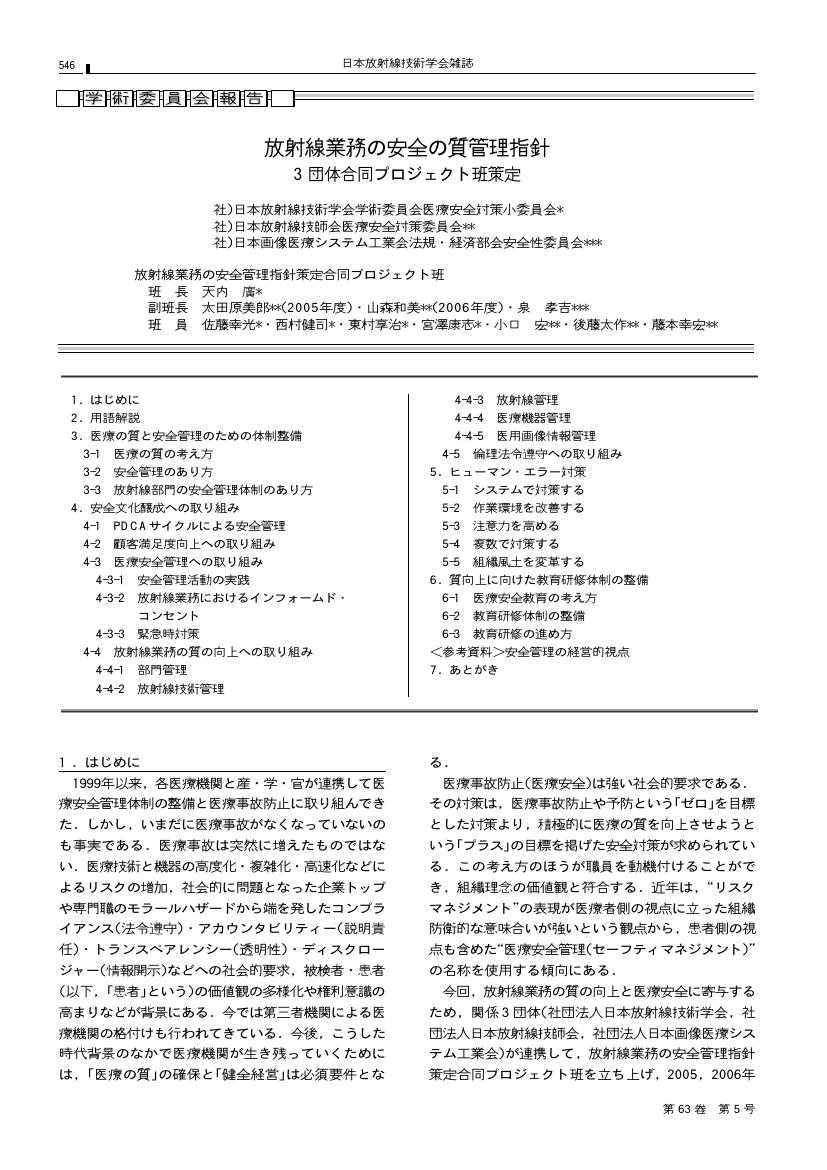1 0 0 0 OA 非イオン性ヨード造影剤によるアレルギー様症状の有害事象に及ぼす水分摂取の影響
- 著者
- 元井 玲子 矢野 育子 尾崎 淳子 鋒山 香苗 山本 崇 深津 祥央 石塚 良子 松村 由美 谷口 正洋 東村 享治 松原 和夫
- 出版者
- 公益社団法人 日本薬学会
- 雑誌
- YAKUGAKU ZASSHI (ISSN:00316903)
- 巻号頁・発行日
- vol.135, no.10, pp.1177-1184, 2015-10-01 (Released:2015-10-01)
- 参考文献数
- 13
- 被引用文献数
- 2 2
The use of iodine contrast agents occasionally causes serious allergic symptoms including anaphylaxis. At Kyoto University Hospital to prevent nephropathy we began recommending water intake before and after administration of iodine contrast agents in September 2012. In the present study we investigated the effect of water intake on the incidence of allergy-like events after the use of non-ionic iodine contrast agents. We extracted the occurrence of allergy-like events from the incident report system in our hospital from January 2011 to September 2014, and classified these events into the following 3 grades: 1+ (follow-up); 2+ (medication treatment); and 3+ (hospitalization). The allergy-like incidence rate was calculated for subsequent evaluation according to season and water intake. Allergy-like events significantly decreased from 0.49% before the recommendation of water intake to 0.26% at 1 year and 0.20% at 2 years after implementing the recommendation. The incidence of allergy-like events was significantly higher in summer than in winter before water intake was recommended. After implementing the recommendation, the value for summer significantly decreased to an incidence similar to that of winter. Respiratory and gastrointestinal allergy-like symptoms were dramatically decreased after implementing the recommendation. Water intake may be useful for preventing allergy-like events associated with non-ionic iodine contrast agents, especially during the summer.
1 0 0 0 OA Time-density Curveの形成過程分析から考察する撮影タイミングの決定方法
- 著者
- 山口 功 石田 智一 木戸屋 栄次 東村 享治 鈴木 正行
- 出版者
- 公益社団法人日本放射線技術学会
- 雑誌
- 日本放射線技術學會雜誌 (ISSN:03694305)
- 巻号頁・発行日
- vol.61, no.2, pp.260-267, 2005-02-20
- 被引用文献数
- 7
A strict determination of scan timing is needed for dynamic multi-phase scanning and 3D-CT angiography (3D-CTA) by multi-detector row CT (MDCT). In the present study, contrast media arrival time (T_<AR>) was measured in the abdominal aorta at the bifurcation of the celiac artery for confirmation of circulatory differences in patients. In addition, we analyzed the process of formation of the time-density curve (TDC) and examined factors that affect the time to peak aortic enhancement (T_<PA>). Mean T_<AR> was 15.57±3.75 s. TDCs were plotted for each duration of injection. The rising portions of TDCs were superimposed on one another. TDCs with longer injection durations were piled up upon one another. Rise angle was approximately constant in response to each flow rate. Rise time (T_R) showed a good correlation with injection duration (T_<ID>). T_R was 1.01T_<ID> (R^2=0.994) in the phantom study and 0.94T_<ID>-0.60 (R^2=0.988) in the clinical study. In conclusion, for the selection of optimal scan timing it is useful to determine T_R at a given point and to determine the time from T_<AR>.

